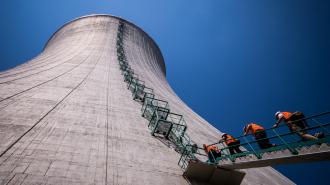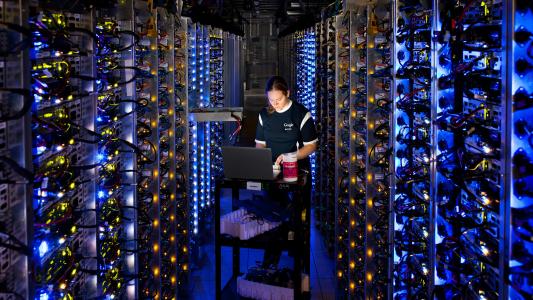This article is an installment of Future Explored, a weekly guide to world-changing technology. You can get stories like this one straight to your inbox every Saturday morning by subscribing here.
It’s 2035, and the US just reached its goal of 100% clean electricity. How did we do it? While solar, wind, and other renewables generate the majority of the nation’s electricity, we’d still be relying at least partially on fossil fuels — if not for a recent increase in clean nuclear power.
America’s nuclear future
It’s been 85 years since scientists first split a uranium atom, and today, the energy released by that process — nuclear fission — is generating about 20% of the United States’ electricity.
Because nuclear power doesn’t produce carbon emissions and is more dependable than solar and wind power, many see it as a key weapon in the battle against climate change, but rather than increasing, the number of reactors in the US has been declining in recent decades.
To find out what can be done to reverse this trend, let’s look at America’s history with nuclear power and the ideas that could help us reach net-zero as soon as possible.
Where we’ve been
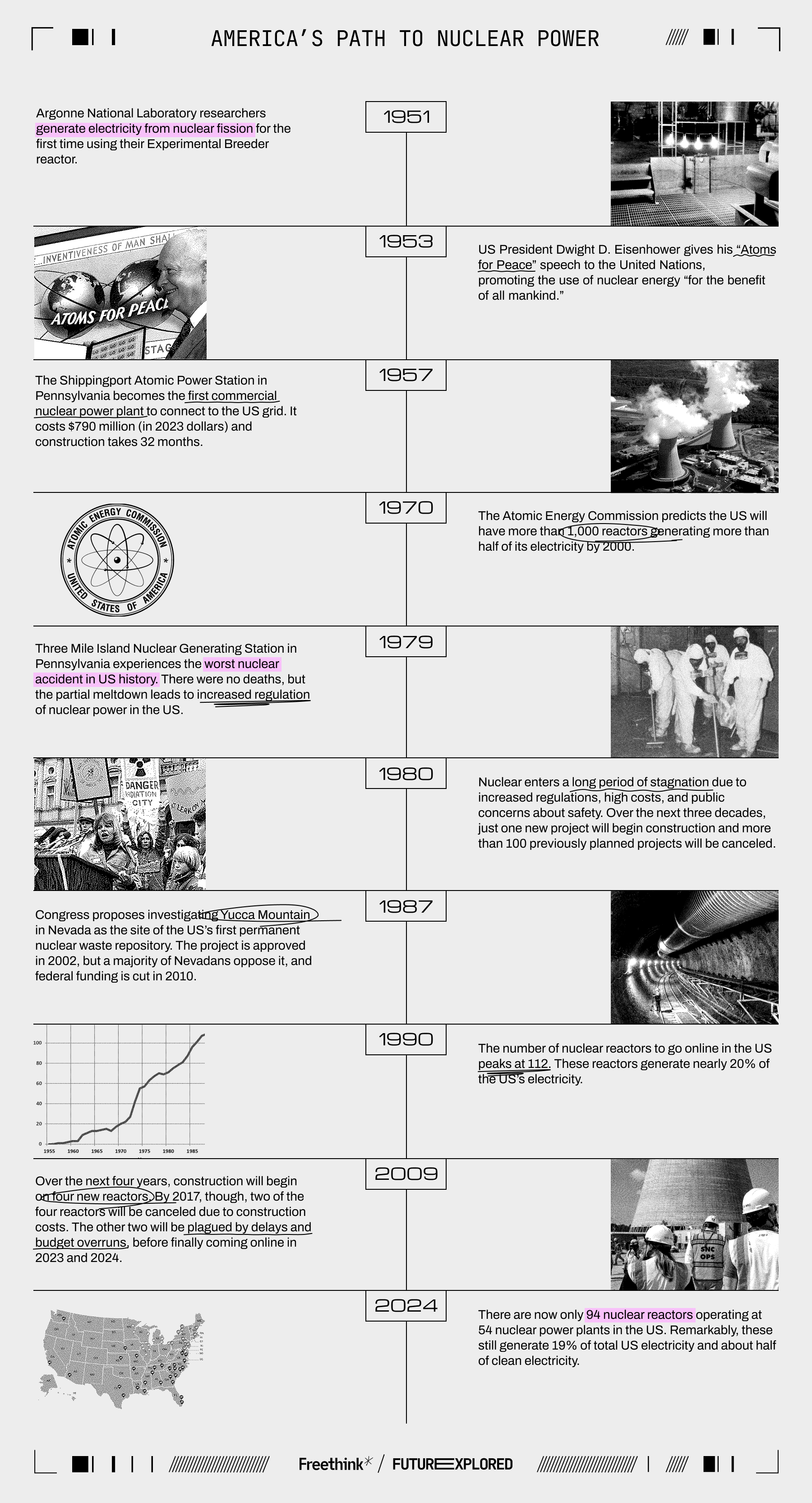
Where we’re going (maybe)
The US is at a crossroads in its nuclear power journey.
Since the 1990s, the country has been relying on nuclear power to generate about 20% of its electricity, but its nuclear fleet is getting old — the average lifespan of a reactor is 20-40 years, and the average age of operating US reactors is 42 years.
Right now, older reactors are being decommissioned much faster than new ones are being built — in fact, there is only one new reactor under construction in the US today. The US Energy Information Administration (EIA) now forecasts that nuclear power would provide just 13% of electricity in 2050.
But to reach the goal of a 100% clean electricity sector by 2035, the National Renewable Energy Laboratory predicts we may need to increase nuclear capacity to the point that it can meet 27% of our electricity demand. Combine this with suddenly surging electricity demand, after decades with little growth, and the US is going to need a lot more clean energy.
So, what can be done to increase the amount of nuclear power in the US?
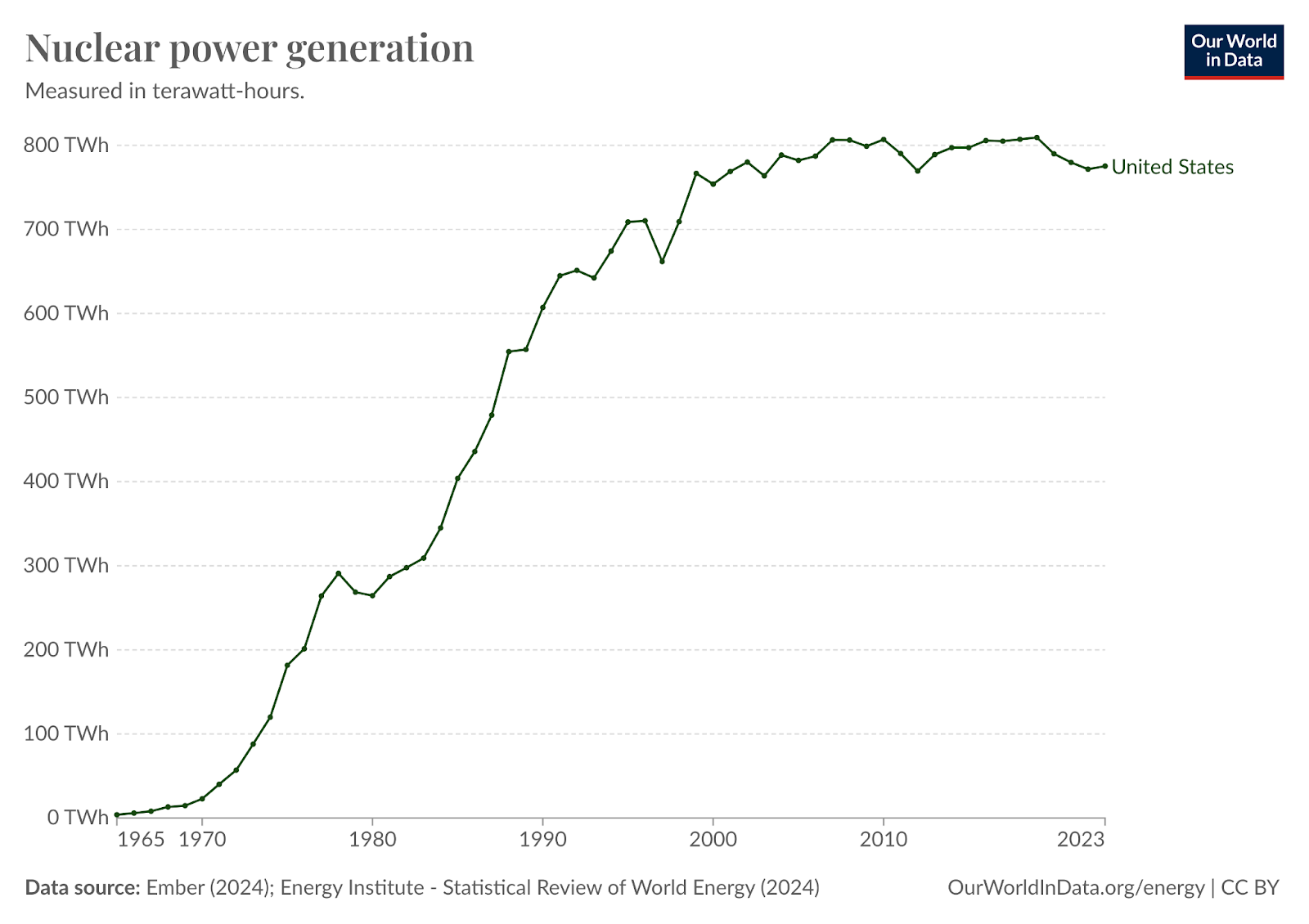
Reduce red tape
Normally, the more times you do something, the better you get at it — you become more efficient and learn to avoid mistakes that might have tripped you up as a beginner. But the US has had the opposite experience with building nuclear power plants.
If you started building a new reactor in the mid-1960s, the “overnight cost” (the cost not including any interest on financing) would likely be between $1000-$1500/kW, but if you started in 1970s, you’d be paying $3000-$6000/kW (all in 2010 dollars).
The only reactors that have started and finished construction since — the Vogtle reactors 3 and 4 that just went online in Georgia — had an overnight cost of $7000/kW (in 2010 dollars) and took seven years longer than planned to build.
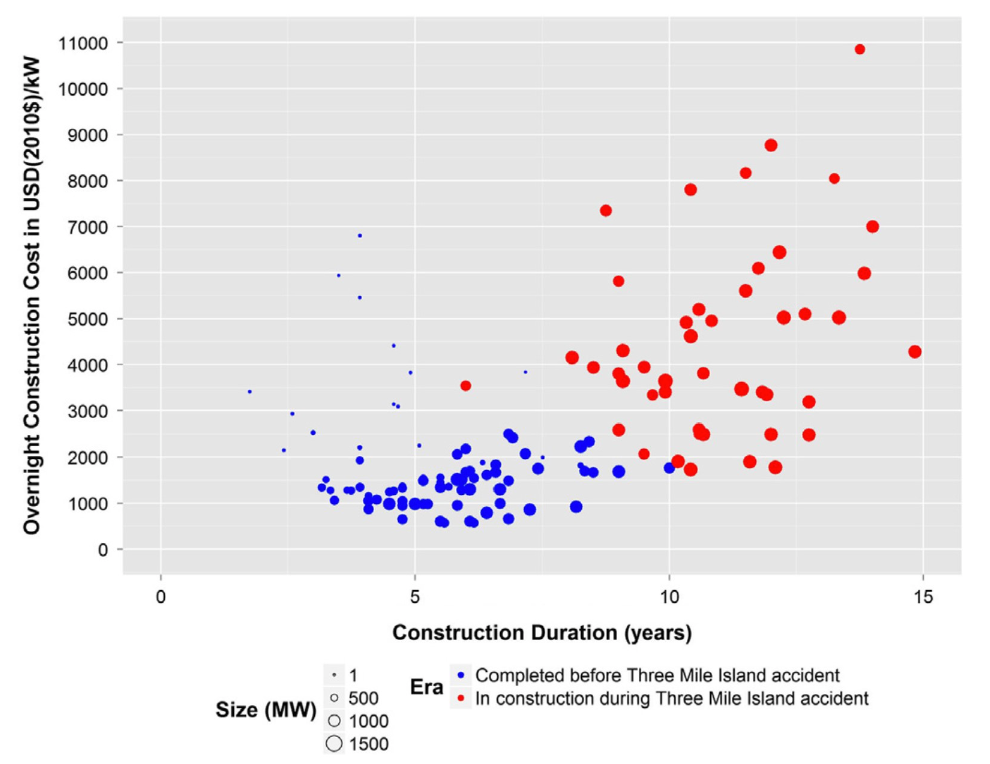
There isn’t one single reason for this decreasing efficiency, but constantly evolving regulations are a major contributor — they can force builders to make changes to previously approved designs, even to plants currently under construction, increasing labor costs and delaying construction timelines.
Building a new nuclear reactor is already a lengthy, multi-billion dollar undertaking. Add in the potential for regulatory issues to extend timelines and increase costs, and it’s not hard to understand why developers are hesitant to get involved in nuclear.
In an attempt to make the investment less risky, Congress passed and President Biden signed the Inflation Reduction Act in 2022, which includes investment tax credits of up to 50% for new nuclear reactors. In 2024, it followed that up with the ADVANCE Act, a bill designed to make it easier to build and deploy new reactors in the US.
“With passage of the ADVANCE bill, Congress is telling the regulators that public benefits are and have always been part of their mission.”
Ted Nordhaus
In addition to instructing the Nuclear Regulatory Commission (NRC), the chief nuclear regulator in the US, to reduce certain licensing fees and cut down on review times, the ADVANCE Act also updates the NRC’s mission statement to include that it will not “unnecessarily limit the…deployment of nuclear energy.”
Critics argue that the new law will make nuclear power less safe, but proponents like Ted Nordhaus, founder and executive director of the Breakthrough Institute, a research center that promotes technological solutions to environmental challenges, disagree.
“For decades, the NRC has tried to regulate to make risk from nuclear energy as close to zero as possible, but has failed to consider the cost to the environment, public health, energy security, or prosperity of not building and operating nuclear energy plants,” Nordhaus said in a statement. “This reduces rather than improves public health and safety.”
“But with passage of the ADVANCE bill,” he continued, “Congress is telling the regulators that public benefits are and have always been part of their mission.”
Encourage innovation
The ADVANCE Act is also designed to help get new kinds of nuclear reactors licensed — this could include reactors with unique cooling systems, like TerraPower’s sodium-cooled Natrium reactor, as well as small modular reactors (SMR) and microreactors.
As you’d expect from the names, SMRs and microreactors are smaller than the huge reactors mostly in use at current nuclear plants, which means they don’t generate as much electricity.
However, their smaller size means they can be deployed in more locations — such as near power-hungry data centers, or as a complement to wind and solar farms — and multiple reactors can be added to a single site to scale up output to whatever is required.
SMRs and microreactors generally have simpler designs with safety characteristics that make them less likely to meltdown, and because they can (theoretically) be built on assembly lines in factories — rather than constructed on site like larger reactors — they have the potential to be cheaper and faster to deploy, too.
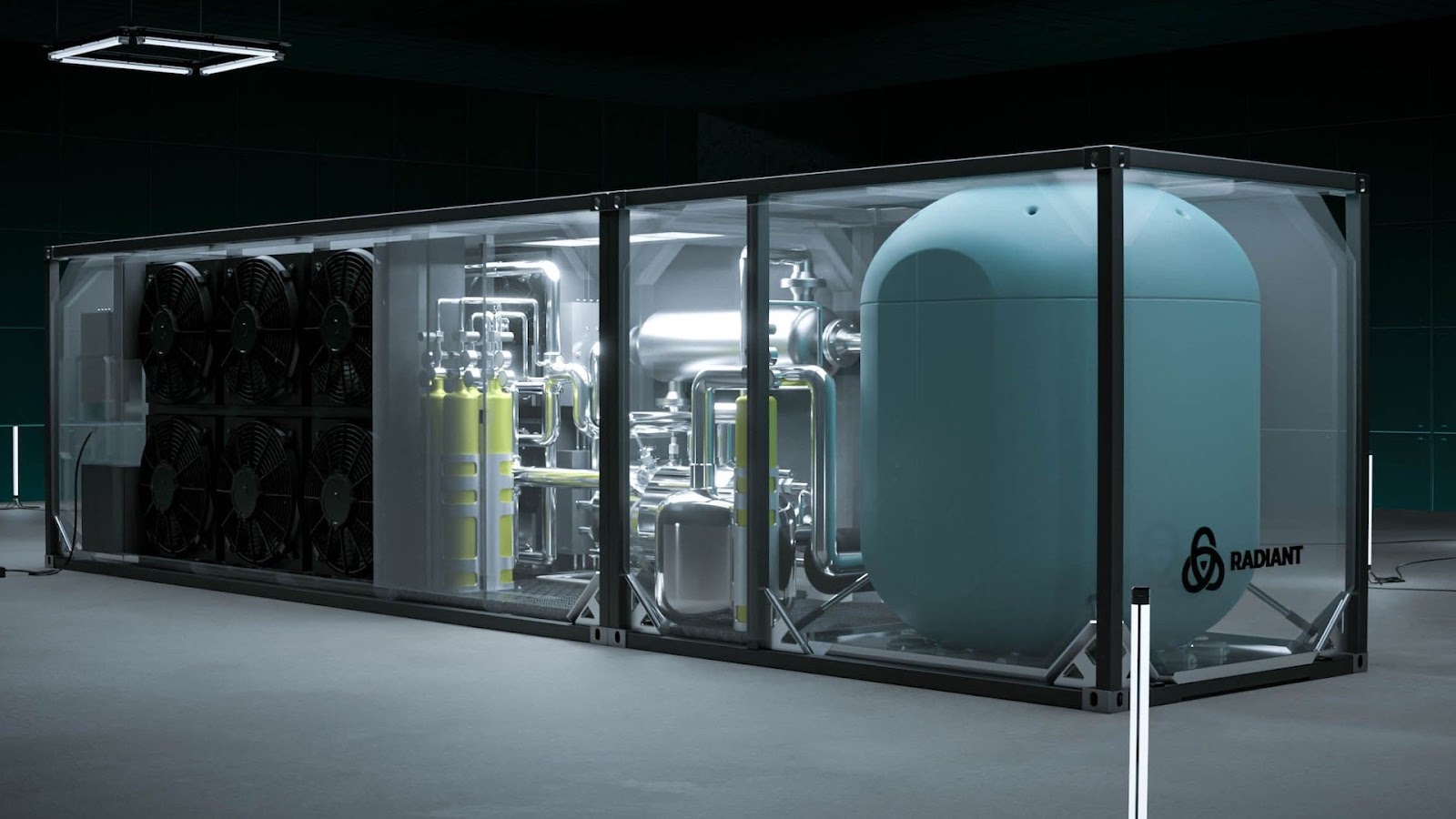
Potential, but not proven. The NRC has already approved one SMR, but its developer, NuScale Power, canceled its first planned project after the construction budget exploded from $5.3 billion to $9.3 billion. That was even more expensive, per kW, than the Vogtle reactors, which themselves took twice as long and cost twice as much as originally planned.
It’s not clear whether NuScale’s situation is a sign that SMRs aren’t going to be as cheap as hoped or an example of the kinds of growing pains that can be alleviated with more experience. The ADVANCE Act could help us find out by getting more SMR and microreactor developers licensed to deploy their tech.
The DoE’s recently announced plan to provide up to $900 million in funding to SMR developers could help get help, too, as could its Advanced Reactor Demonstration Program (ARDP), which has issued $160 million in funding to get innovative reactors — including one being developed by TerraPower — up and running.
Address public concerns
Red tape and financial risks aren’t the only roadblocks to deploying more nuclear power in the US. While a slight majority of Americans support adding more nuclear power plants to the US electric grid, many who are opposed are staunchly against it, and that opposition can make it harder to build new plants or keep existing ones from closing.
People cite a lot of different reasons for opposing nuclear power, too.
Some are concerned that reactors will cause harm to people or the environment, from accidents or terrorist attacks. Others see the radioactive waste from reactors as a potential health threat or believe that living near or working at a plant is enough to cause health problems.
The potential for bad actors to use the materials needed to fuel nuclear power plants to make weapons is another concern, and even people who aren’t entirely against nuclear power may protest increasing the US’s reliance on it on the grounds that solar and wind are better options.
These concerns aren’t entirely unfounded — people have sometimes died due to accidents at nuclear power plants, and some recent research suggests that working at one may slightly increase a person’s risk of dying from a solid tumor.
However, there’s no evidence that simply living near a nuclear power plant in the US is harmful, and some newer reactor designs are essentially meltdown-proof.
Moreover, no form of electricity production is entirely without health risks. Compared to the death rates from other kinds of power, like coal and gas — widely used with minimal protest today, despite their role in climate change — nuclear is actually one of the safest forms of power.
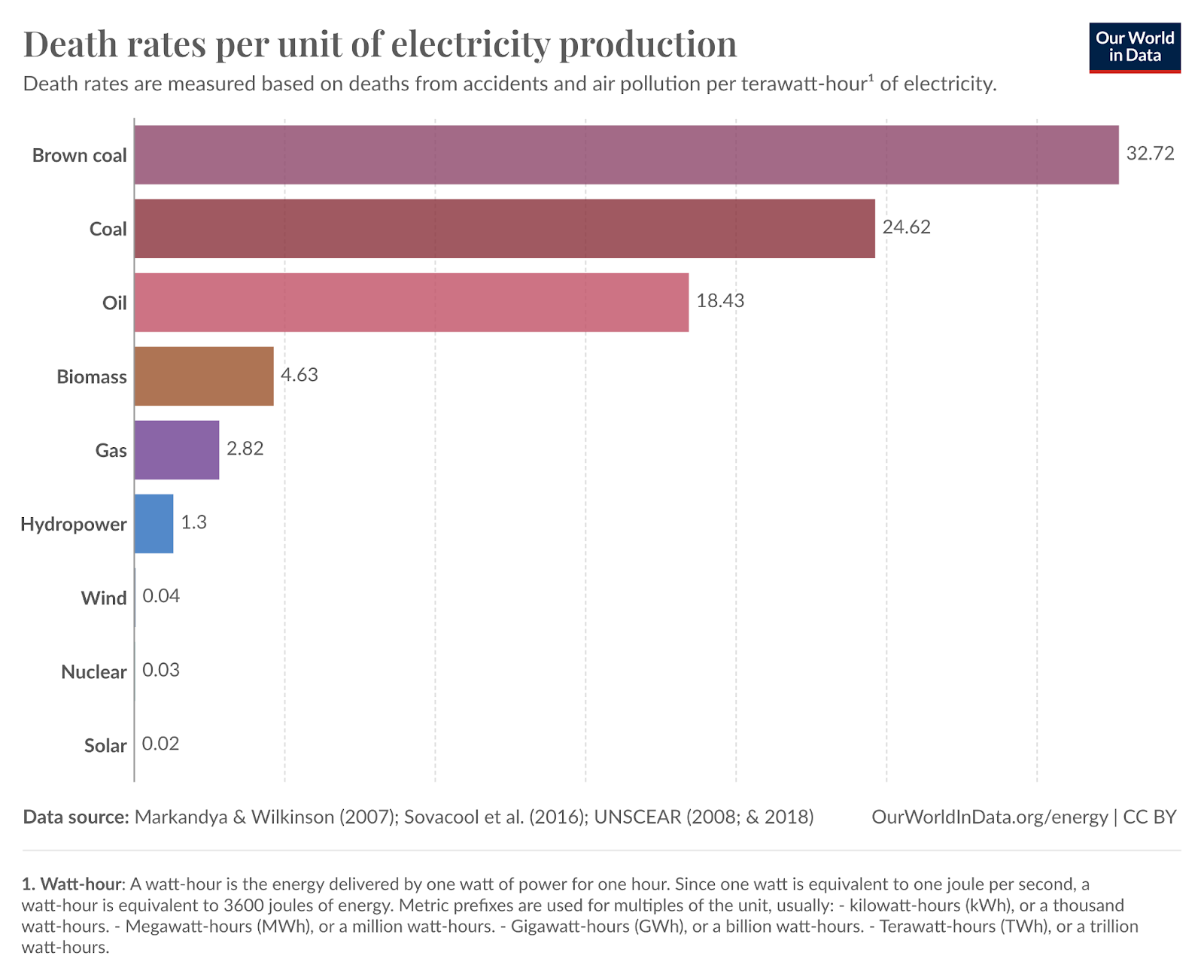
Nuclear waste is also often misunderstood.
Rather than being some green ooze with the potential to leak into our water and create three-eyed fish, spent nuclear fuel is solid, and reactors aren’t producing mountains of the stuff — according to the DoE, all of the waste generated by US commercial reactors since the invention of nuclear power “could fit on a single football field at a depth of less than 10 yards.”
Right now, nuclear waste is stored on site at power plants in steel and concrete casks that pose no threat to human health. The US does lack a national plan for the permanent storage of its waste, though, and the consensus among experts is that we should eventually store it deep underground.
“When it’s on the surface, it’s dependent on a government that’s going to continue to exist to protect it for 100, 200, 300 years,” Elizabeth Muller, cofounder of nuclear waste disposal startup Deep Isolation, told Freethink. “Whereas when it’s deep underground, you don’t need those sort of human mechanisms to keep us all safe.”
Deep Isolation proposes using directional drilling techniques, developed by the oil industry, to create deep boreholes in rock. These could be created in more places, eliminating the need to transport waste to a single large repository designed to store the entire nation’s waste.
Whether the US decides to pursue something like Deep Isolation’s storage solution or not is TBD, but it is working to alleviate public concerns about nuclear power and nuclear waste.
In 2022, the DoE invested $800,000 into a program focused on community outreach and education surrounding nuclear power, and in 2023, it awarded $26 million in funding to groups that will engage with people in communities being considered for new nuclear waste storage sites.
“This funding will help DoE learn from and involve communities across the country in the consent-based siting process, answer questions and concerns, and develop an understanding so that we are good neighbors even before moving in,” said US Secretary of Energy Jennifer M. Granholm.
Ultimately, our electricity demand is increasing, and until we see some breakthroughs in battery tech, solar and wind likely won’t be affordable and dependable enough to support the grid by themselves. Nuclear power isn’t perfect, but the risks it poses to human health and the environment pale in comparison to those we face if we continue to burn fossil fuels.
Update, 8/19/24, 4:25 pm ET: This article was updated to specify that the Department of Energy’s calculation about the amount of nuclear waste generated since the start of the nuclear power era is specific to US commercial reactors only.
We’d love to hear from you! If you have a comment about this article or if you have a tip for a future Freethink story, please email us at [email protected].
